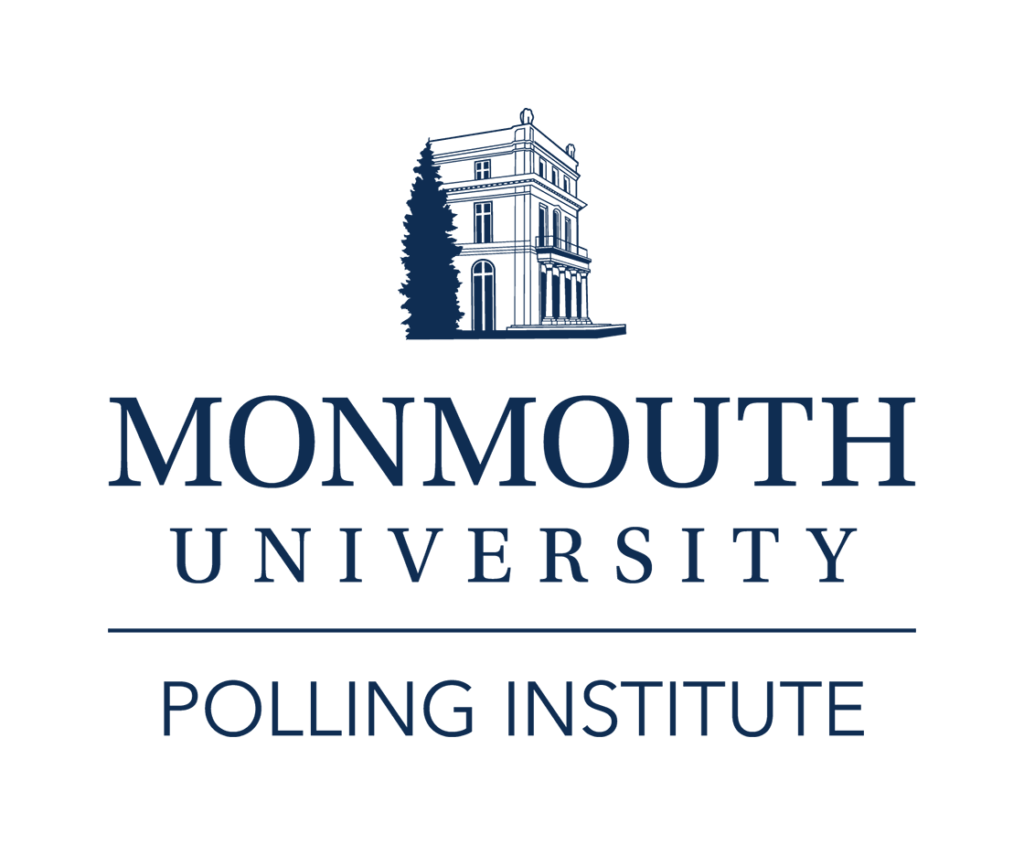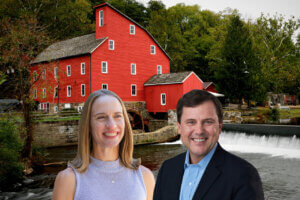With the governor expected to sign historic property tax cap legislation today, the latest Monmouth University/Gannett New Jersey Press Media Poll finds that many state residents approve of the agreement, but more would have preferred a hard cap over a soft one. Regardless, the overwhelming majority say a cap won’t fix the underlying problems that cause high property taxes.
About 3-in-4 New Jerseyans have heard something about the recent special session on the property tax cap. Among this group, 48% say they approve of the deal reached by the governor and legislature compared to 31% who disapprove. However, it is not clear that these residents are actually aware of the plan’s details.
When asked specifically about their opinion on a 2 percent cap with exemptions for health care, pension, and debt payments, only 35% of New Jerseyans say they favor this type of cap versus 45% who oppose it. By comparison, a majority of 54% favor a hard 2.5% cap like the one the governor originally proposed, with 31% opposed to it. It is among the governor’s fellow Republicans where the difference in support levels between a hard cap (72%) and soft cap (40%) is most pronounced. Democrats are somewhat more likely to support a hard cap (45%) over a soft cap (29%) and independents are significantly more likely (54% to 36%).
Even among those who claim to have been paying a lot of attention to the past weeks’ events, preference for a 2.5% hard cap (66%) is much higher than for the 2% soft cap (39%) that was eventually agreed upon.
“The governor appears to get credit for doing something on this issue, especially since few New Jerseyans are likely to be aware of his stand-down from a hard constitutional cap to a soft statutory one. This may not hurt Chris Christie’s public standing in the short term, but in the long run, he will be judged by his ability to lower property taxes, rather than just slow the rate of increases,” said Patrick Murray, director of the Monmouth University Polling Institute.
Only 12% of the Garden State public believe that a property tax cap will actually fix the underlying problems that cause the state’s highest-in-the-nation property taxes. The overwhelming majority – 74% – say those problems will persist even with a cap in place.
Some residents also worry about the impact a property tax cap will have on local services. While the large majority of New Jerseyans say that the quality of local services (63%) and schools (61%) in their towns will not be affected by the property tax cap, about 3-in-10 fear the cap will cause those services to get worse.
The poll also asked the public to evaluate two other proposals in the “tool kit” that is part of the governor’s overall property tax strategy. There is fairly widespread support for submitting a district’s teacher contract agreement to the county level superintendent for final approval (57%). There is less support, though, for eliminating the ability of laid-off workers to “bump” other employees with less seniority (33%).
“The recent drama at the State House focused on the property tax cap, but many other provisions of the plan await action. Governor Christie still has some work to do to convince the public that all these measures are needed to achieve significant property tax reform,” said Murray.
In the end, just under half (49%) of the New Jersey public say it is at least somewhat likely that the state will enact significant property tax reforms in the next few years. This number is nominally higher than the 42% who said the same five months ago. However, only 10% are confident that such reforms are very likely to happen.
The poll also found that New Jerseyans continue to blame a wide variety of causes for the state’s property tax burden. More than 6-in-10 residents say that waste and fraud (70%) and high public employee salaries (63%) contribute a lot to this problem. A majority also count pensions and benefits (53%) and the number of towns (57%) and school districts (55%) among the list of major contributors.
The Monmouth University/Gannett New Jersey Press Media Poll was conducted by telephone with 801 New Jersey adults from July 7 to 11, 2010. This sample has a margin of error of ± 3.5 percent. The poll was conducted by the Monmouth University Polling Institute and originally published by the New Jersey Press Media newspaper group (Asbury Park Press, Courier-Post, Courier News, Daily Journal, Daily Record, and Home News Tribune).
DATA TABLES
The questions referred to in this release are as follows:
(* Some columns may not add to 100% due to rounding.)
1. The governor called the legislature into special session last week to pass a cap on property tax increases. How much have you heard or read about this – a lot, a little, or nothing at all?
|
TOTAL | REGISTERED VOTER | PARTY ID |
COMMUNITY TYPE | ||||||
|
Yes | No | Dem | Ind | Rep | Urban | Stable town |
Expanding | ||
| A lot | 28% | 30% | 12% | 24% | 28% | 40% | 24% | 30% | 29% |
| A little | 46% | 45% | 47% | 44% | 43% | 48% | 46% | 42% | 47% |
| Nothing at all | 26% | 25% | 41% | 32% | 29% | 12% | 29% | 28% | 23% |
| Unwtd N |
801 | 747 | 54 | 240 | 349 | 195 | 121 | 313 |
353 |
[The following question was asked only of those who heard at least a little about the special session on property taxes: moe=+/-3.9%]
2. Do you approve or disapprove of the plan that the governor and legislature agreed to?
|
TOTAL | REGISTERED VOTER | PARTY ID |
COMMUNITY TYPE | ||||||
|
Yes | No | Dem | Ind | Rep | Urban | Stable town |
Expanding | ||
| Approve | 48% | 48% | 48% | 28% | 52% | 69% | 20% | 56% | 53% |
| Disapprove | 31% | 32% | 25% | 49% | 28% | 11% | 53% | 28% | 24% |
| (VOL) Mixed | 4% | 4% | 0% | 6% | 2% | 4% | 4% | 4% | 4% |
| (VOL) Don’t know | 17% | 16% | 28% | 18% | 18% | 16% | 23% | 12% | 18% |
| Unwtd N |
644 | 609 | 35 | 177 | 279 | 175 | 88 | 261 |
285 |
3. I’m going to read you some proposals about property taxes. For each one, please tell me if you favor or oppose it. If you have no opinion, just say so. [ITEMS WERE ROTATED]
Limit property tax increases to two point five percent (2.5%) across the board, even if certain costs rise higher than that
|
TOTAL | REGISTERED VOTER | PARTY ID |
COMMUNITY TYPE | ||||||
|
Yes | No | Dem | Ind | Rep | Urban | Stable town |
Expanding | ||
| Favor | 54% | 55% | 45% | 45% | 54% | 72% | 33% | 59% | 60% |
| Oppose | 31% | 29% | 43% | 36% | 35% | 19% | 47% | 28% | 25% |
| No opinion | 16% | 16% | 12% | 19% | 11% | 9% | 21% | 13% | 15% |
| Unwtd N |
801 | 747 | 54 | 240 | 349 | 195 | 121 | 313 |
353 |
Limit property tax increases to two percent (2%) for many costs including salaries, but allow a higher increase for rising costs in health care, pension, and debt payments
|
TOTAL | REGISTERED VOTER | PARTY ID |
COMMUNITY TYPE | ||||||
|
Yes | No | Dem | Ind | Rep | Urban | Stable town |
Expanding | ||
| Favor | 35% | 35% | 27% | 29% | 36% | 40% | 29% | 38% | 36% |
| Oppose | 45% | 45% | 47% | 50% | 44% | 44% | 46% | 45% | 44% |
| No opinion | 20% | 19% | 26% | 21% | 19% | 16% | 25% | 17% | 20% |
| Unwtd N |
801 | 747 | 54 | 240 | 349 | 195 | 121 | 313 |
353 |
Eliminate the ability of laid-off public workers to take the job of another worker with less seniority
|
TOTAL | REGISTERED VOTER | PARTY ID |
COMMUNITY TYPE | ||||||
|
Yes | No | Dem | Ind | Rep | Urban | Stable town |
Expanding | ||
| Favor | 33% | 33% | 27% | 28% | 33% | 45% | 22% | 34% | 35% |
| Oppose | 49% | 48% | 58% | 56% | 48% | 37% | 65% | 47% | 45% |
| No opinion | 18% | 18% | 16% | 16% | 19% | 18% | 13% | 19% | 20% |
| Unwtd N |
801 | 747 | 54 | 240 | 349 | 195 | 121 | 313 |
353 |
Require that each local school district submit their teacher contracts to a county level superintendent for final approval
|
TOTAL | REGISTERED VOTER | PARTY ID |
COMMUNITY TYPE | ||||||
|
Yes | No | Dem | Ind | Rep | Urban | Stable town |
Expanding | ||
| Favor | 57% | 59% | 45% | 57% | 57% | 61% | 41% | 61% | 62% |
| Oppose | 25% | 24% | 33% | 25% | 25% | 28% | 35% | 24% | 22% |
| No opinion | 17% | 17% | 22% | 18% | 18% | 11% | 24% | 15% | 16% |
| Unwtd N |
801 | 747 | 54 | 240 | 349 | 195 | 121 | 313 |
353 |
4. Will a property tax cap fix the problems that cause high property taxes in New Jersey, or will the problems still exist even with a cap in place?
|
TOTAL | REGISTERED VOTER | PARTY ID |
COMMUNITY TYPE | ||||||
|
Yes | No | Dem | Ind | Rep | Urban | Stable town |
Expanding | ||
| Fix the problems | 12% | 13% | 5% | 13% | 9% | 19% | 11% | 14% | 12% |
| Problems still exist | 74% | 73% | 82% | 77% | 80% | 67% | 70% | 73% | 78% |
| (VOL) Fix some but not all | 4% | 3% | 5% | 1% | 3% | 7% | 3% | 4% | 3% |
| (VOL) Don’t know | 10% | 10% | 8% | 8% | 7% | 8% | 17% | 9% | 7% |
| Unwtd N |
801 | 747 | 54 | 240 | 349 | 195 | 121 | 313 |
353 |
[QUESTIONS 5 AND 6 WERE ROTATED]
5. If a two percent property tax cap is imposed, do you think the quality of local services in your town will get better, get worse, or stay about the same?
|
TOTAL | REGISTERED VOTER | PARTY ID |
COMMUNITY TYPE | ||||||
|
Yes | No | Dem | Ind | Rep | Urban | Stable town |
Expanding | ||
| Get better | 5% | 5% | 3% | 6% | 2% | 5% | 6% | 5% | 2% |
| Get worse | 30% | 30% | 33% | 39% | 28% | 15% | 40% | 31% | 25% |
| Stay about the same | 63% | 63% | 62% | 52% | 68% | 78% | 51% | 60% | 72% |
| (VOL) Don’t know | 3% | 3% | 2% | 3% | 1% | 2% | 2% | 4% | 1% |
| Unwtd N |
801 | 747 | 54 | 240 | 349 | 195 | 121 | 313 |
353 |
6. If a two percent property tax cap is imposed, do you think the quality of the public schools in your town will get better, get worse, or stay about the same?
|
TOTAL | REGISTERED VOTER | PARTY ID |
COMMUNITY TYPE | ||||||
|
Yes | No | Dem | Ind | Rep | Urban | Stable town |
Expanding | ||
| Get better | 7% | 7% | 7% | 7% | 4% | 9% | 6% | 8% | 5% |
| Get worse | 29% | 29% | 31% | 37% | 29% | 15% | 37% | 29% | 26% |
| Stay about the same | 61% | 61% | 56% | 53% | 65% | 74% | 51% | 58% | 68% |
| (VOL) Don’t know | 4% | 3% | 6% | 4% | 1% | 2% | 6% | 4% | 2% |
| Unwtd N |
801 | 747 | 54 | 240 | 349 | 195 | 121 | 313 |
353 |
7. How much do each of the following contribute to higher property taxes in the state – [READ ITEM] – a lot, a little, or not at all? [ITEMS WERE ROTATED]
Waste and fraud
|
TOTAL | REGISTERED VOTER | PARTY ID |
COMMUNITY TYPE | ||||||
|
Yes | No | Dem | Ind | Rep | Urban | Stable town |
Expanding | ||
| A lot | 70% | 71% | 59% | 63% | 74% | 75% | 62% | 73% | 70% |
| A little | 23% | 20% | 40% | 27% | 20% | 20% | 29% | 18% | 24% |
| Not at all | 4% | 5% | 1% | 4% | 5% | 2% | 3% | 5% | 4% |
| (VOL) Don’t know | 4% | 4% | 0% | 6% | 2% | 3% | 6% | 4% | 2% |
| Unwtd N |
801 | 747 | 54 | 240 | 349 | 195 | 121 | 313 |
353 |
| TREND: | July 2010 | Sept. 2009 | Sept. 2005 | |
| A lot | 70% | 64% | 64% | |
| A little | 23% | 23% | 24% | |
| Not at all | 4% | 4% | 5% | |
| (VOL) Don’t know | 4% | 9% | 8% | |
| Unwtd N |
801 | 900 | 800 | |
High salaries for public employees
|
TOTAL | REGISTERED VOTER | PARTY ID |
COMMUNITY TYPE | ||||||
|
Yes | No | Dem | Ind | Rep | Urban | Stable town |
Expanding | ||
| A lot | 63% | 65% | 53% | 60% | 62% | 74% | 55% | 68% | 65% |
| A little | 23% | 22% | 35% | 26% | 25% | 18% | 28% | 21% | 24% |
| Not at all | 9% | 9% | 10% | 9% | 10% | 5% | 11% | 9% | 8% |
| (VOL) Don’t know | 4% | 4% | 2% | 5% | 3% | 3% | 6% | 2% | 4% |
| Unwtd N |
801 | 747 | 54 | 240 | 349 | 195 | 121 | 313 |
353 |
| TREND: | July 2010 | Sept. 2009 | Sept. 2005 | |
| A lot | 63% | 53% | 44% | |
| A little | 23% | 29% | 37% | |
| Not at all | 9% | 8% | 12% | |
| (VOL) Don’t know | 4% | 11% | 7% | |
| Unwtd N |
801 | 900 | 800 | |
Union pension and benefit agreements
|
TOTAL | REGISTERED VOTER | PARTY ID |
COMMUNITY TYPE | ||||||
|
Yes | No | Dem | Ind | Rep | Urban | Stable town |
Expanding | ||
| A lot | 53% | 55% | 38% | 39% | 57% | 70% | 30% | 60% | 59% |
| A little | 29% | 28% | 36% | 40% | 22% | 21% | 40% | 24% | 27% |
| Not at all | 11% | 10% | 20% | 11% | 14% | 6% | 19% | 10% | 7% |
| (VOL) Don’t know | 8% | 8% | 6% | 10% | 7% | 3% | 11% | 6% | 6% |
| Unwtd N |
801 | 747 | 54 | 240 | 349 | 195 | 121 | 313 |
353 |
| TREND: | July 2010 | Sept. 2009 | |
| A lot | 53% | 41% | |
| A little | 29% | 33% | |
| Not at all | 11% | 13% | |
| (VOL) Don’t know | 8% | 13% | |
| Unwtd N |
801 |
900 | |
The number of school districts we have
|
TOTAL | REGISTERED VOTER | PARTY ID |
COMMUNITY TYPE | ||||||
|
Yes | No | Dem | Ind | Rep | Urban | Stable town |
Expanding | ||
| A lot | 55% | 56% | 45% | 48% | 58% | 61% | 42% | 61% | 56% |
| A little | 29% | 29% | 36% | 32% | 31% | 25% | 30% | 26% | 32% |
| Not at all | 8% | 8% | 10% | 10% | 6% | 8% | 16% | 6% | 7% |
| (VOL) Don’t know | 8% | 8% | 8% | 11% | 5% | 7% | 13% | 7% | 5% |
| Unwtd N |
801 | 747 | 54 | 240 | 349 | 195 | 121 | 313 | 353 |
| TREND: | July 2010 | Sept. 2009 | |
| A lot | 55% | 54% | |
| A little | 29% | 25% | |
| Not at all | 8% | 9% | |
| (VOL) Don’t know | 8% | 12% | |
| Unwtd N |
801 |
900 | |
The number of municipal governments we have
|
TOTAL | REGISTERED VOTER | PARTY ID |
COMMUNITY TYPE | ||||||
|
Yes | No | Dem | Ind | Rep | Urban | Stable town |
Expanding | ||
| A lot | 57% | 57% | 54% | 53% | 61% | 63% | 51% | 62% | 56% |
| A little | 28% | 27% | 36% | 30% | 25% | 29% | 26% | 23% | 32% |
| Not at all | 6% | 7% | 0% | 4% | 6% | 4% | 10% | 4% | 5% |
| (VOL) Don’t know | 9% | 9% | 11% | 13% | 8% | 4% | 12% | 10% | 6% |
| Unwtd N |
801 | 747 | 54 | 240 | 349 | 195 | 121 | 313 |
353 |
| TREND: | July 2010 | Sept. 2009 | |
| A lot | 57% | 51% | |
| A little | 28% | 32% | |
| Not at all | 6% | 7% | |
| (VOL) Don’t know | 9% | 10% | |
| Unwtd N |
801 |
900 | |
8. How likely is it that the state will enact reforms in the next few years to significantly lower property taxes – very, somewhat, not too, or not at all likely?
|
| TOTAL | REGISTERED VOTER | PARTY ID |
COMMUNITY TYPE | |||||
|
Yes | No | Dem | Ind | Rep | Urban | Stable town |
Expanding | ||
| Very likely | 10% | 10% | 11% | 9% | 6% | 20% | 9% | 10% | 11% |
| Somewhat likely | 39% | 39% | 38% | 39% | 38% | 43% | 36% | 35% | 43% |
| Not too likely | 18% | 19% | 12% | 18% | 21% | 14% | 21% | 19% | 15% |
| Not at all likely | 30% | 29% | 37% | 30% | 33% | 21% | 30% | 33% | 28% |
| (VOL) Don’t know | 3% | 3% | 2% | 4% | 2% | 2% | 4% | 2% | 3% |
| Unwtd N |
801 | 747 | 54 | 240 | 349 | 195 | 121 | 313 |
353 |
| TREND: | July 2010 | Feb. 2010 | April 2006 |
| Very likely | 10% | 8% | 6% |
| Somewhat likely | 39% | 34% | 20% |
| Not too likely | 18% | 29% | 17% |
| Not at all likely | 30% | 27% | 51% |
| (VOL) Don’t know | 3% | 2% | 5% |
| Unwtd N |
801 | 803 |
803 |
The Monmouth University/Gannett New Jersey Press Media Poll was conducted by the Monmouth University Polling Institute on July 7-11, 2010 with a statewide random sample of 801 adult residents. Sampling and data collection services were provided by Braun Research, Inc. For results based on the total sample, one can say with 95% confidence that the error attributable to sampling has a maximum margin of plus or minus 3.5 percentage points. Sampling error increases as the sample size decreases, so statements based on various population subgroups, such as separate figures reported by gender or party identification, are subject to more error than are statements based on the total sample. In addition to sampling error, one should bear in mind that question wording and practical difficulties in conducting surveys can introduce error or bias into the findings of opinion polls.
|
POLL DEMOGRAPHICS (weighted) | |||
| 38% Dem | 48% Male | 28% 18-34 |
67% White |
| 40% Ind | 52% Female | 41% 35-54 |
13% Black |
| 22% Rep | 31% 55+ |
12% Hispanic | |
|
8% Asian/Other | |||
It is the Monmouth University Polling Institute’s policy to conduct surveys of all adult New Jersey residents, including voters and non-voters, on issues that affect the state. Specific voter surveys are conducted when appropriate during election cycles.
Click on pdf file link below for full methodology and results by key demographic groups.




